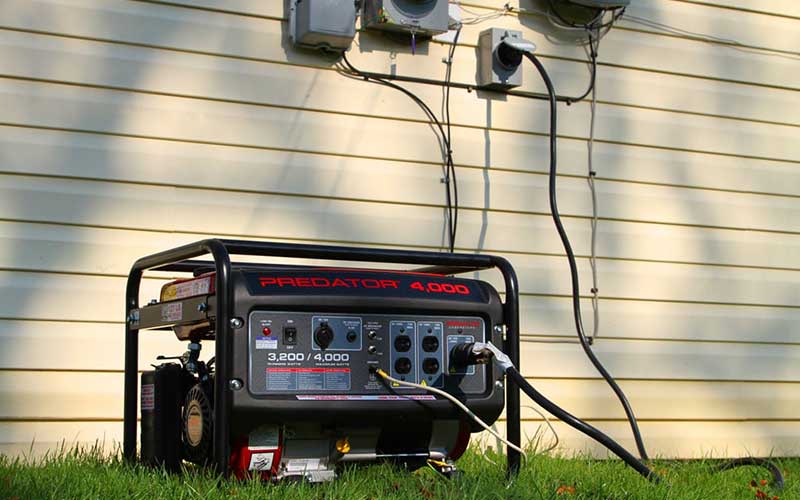
How to Use a Generator Transfer Switch? A Complete Guide
How to Use a Generator Transfer Switch? A Complete Guide 2023
If you live in an area where power outages are frequent or if you’re preparing for a natural disaster, a generator transfer switch is an essential tool that can keep your home running smoothly during an emergency.
A generator transfer switch is a device that enables you to safely and easily switch the power supply in your home from the utility company to a backup generator.
In this article, we’ll discuss what a generator transfer switch is, why it’s important, and how to use it.
What is a Generator Transfer Switch?
During a power outage, a generator transfer switch is placed in your home’s electrical system to convert the power source from the utility company to a backup generator.
When the electricity goes out, the transfer switch detects it and instantly changes the power source to the generator.
When utility power is restored, the transfer switch returns the power source to the utility company and turns off the generator.

Why Do You Need a Generator Transfer Switch?
A generator transfer switch is essential for the safe and efficient use of a backup generator.
During a power outage, you would have to physically disconnect your home from the utility company’s power grid and connect it to the generator if you did not have a transfer switch.
This is a hazardous and time-consuming procedure that might expose you and your family to electrical shock or electrocution.
Running a generator without a transfer switch can also cause harm to your home’s electrical system and place a burden on the generator.
Types of Generator Transfer Switches
There are two main types of generator transfer switches: manual and automatic.
1. Manual Transfer Switches
A manual transfer switch requires you to physically switch the power source from the utility company to the generator using a switch located on the transfer switch.
Manual transfer switches are less expensive than automatic transfer switches, but they require you to be present and actively monitor the power source during an outage.
2. Automatic Transfer Switches
When the electricity goes out, an automated transfer switch detects it and changes the power source to the generator.
When the utility power is restored, the automated transfer switch returns the electricity to the utility company and turns off the generator.
Automatic transfer switches cost more than manual transfer switches, but they provide more convenience and safety.

Selecting the Right Generator Transfer Switch
When selecting a generator transfer switch, there are a few important factors to consider, including:
- The wattage of your generator
- The amperage of your home’s electrical system
- The type of transfer switch (manual or automatic)
- The location of the transfer switch
- The size and type of your home’s electrical panel
How to Install a Generator Transfer Switch
Installing a generator transfer switch should only be done by a licensed electrician. The installation process involves:
- Disconnecting the power supply to your home
- Mounting the transfer switch in a safe and accessible location
- Connecting the transfer switch to your home’s electrical panel and the generator
- Testing the transfer switch to ensure that
How to Use a Generator Transfer Switch
Using a generator transfer switch is a straightforward process that can be done safely and easily if you follow the proper steps. Here’s how to use a generator transfer switch:
- Make sure that your generator is properly installed and fueled.
- Turn off all the electrical appliances and devices in your home.
- Turn off the main circuit breaker in your home’s electrical panel.
- Connect the generator to the transfer switch using the appropriate cables.
- Turn on the generator and let it warm up for a few minutes.
- Switch the transfer switch to the “generator” position.
- Turn on the circuit breakers for the circuits you want to power with the generator.
- Turn on the electrical appliances and devices you want to use.
- When the utility power comes back on, turn off all the appliances and devices connected to the generator.
- Switch the transfer switch to the “utility” position.
- Turn off the generator and disconnect it from the transfer switch.

Generator Transfer Switch Maintenance
To ensure that your generator transfer switch functions properly during an emergency, it’s important to perform regular maintenance. Here are a few maintenance tasks you can do:
- Inspect the transfer switch for any signs of wear or damage.
- Test the transfer switch once a month to ensure that it switches between the utility and generator power sources correctly.
- Clean the transfer switch to remove any dust or debris that could interfere with its operation.
- Check the connections between the transfer switch, generator, and electrical panel for any signs of corrosion or loose wires.
Safety Tips When Using a Generator Transfer Switch
Using a generator transfer switch can be safe if you follow these important safety tips:
- Always follow the manufacturer’s instructions when installing and using the transfer switch.
- Keep the transfer switch and generator away from flammable materials and sources of heat.
- Never connect the generator directly to your home’s electrical panel without a transfer switch.
- Only use the transfer switch to power essential appliances and devices.
- Keep children and pets away from the generator and transfer switch.
- Install a carbon monoxide detector near the generator to alert you if dangerous levels of carbon monoxide are present.
Troubleshooting Common Generator Transfer Switch Issues
If you’re experiencing issues with your generator transfer switch, here are a few common problems and their solutions:
- The transfer switch won’t switch to the generator power source: Check that the generator is properly connected and turned on. If the problem persists, consult with a licensed electrician.
- The transfer switch is making a humming noise: This could be a sign that the switch is overloaded. Turn off some of the appliances or devices connected to the generator to reduce the load.
- The transfer switch is damaged or not functioning: Consult with a licensed electrician to repair or replace the switch.

Frequently Asked Questions (FAQs)
Q1: Can I install a generator transfer switch myself?
No, installing a generator transfer switch should only be done by a licensed electrician.
Q2: What size generator transfer switch do I need?
The size of the generator transfer switch you need depends on the wattage of your generator and the amperage of your home’s electrical system.
Q3: How often should I test my generator transfer switch?
It’s recommended to test your generator transfer switch once a month.
Q4: Can I use a generator transfer switch with any type of generator?
No, it’s important to ensure that your generator is compatible with your transfer switch. Consult the manufacturer’s instructions or a licensed electrician for guidance.
Conclusion
A generator transfer switch is an essential component of any home backup power system. By allowing you to safely and easily switch between your utility and generator power sources, a transfer switch ensures that you have power when you need it most.
Remember to follow proper installation, usage, and maintenance procedures, and always consult with a licensed electrician if you have any questions or concerns.
- No Comments
- May 6, 2023
